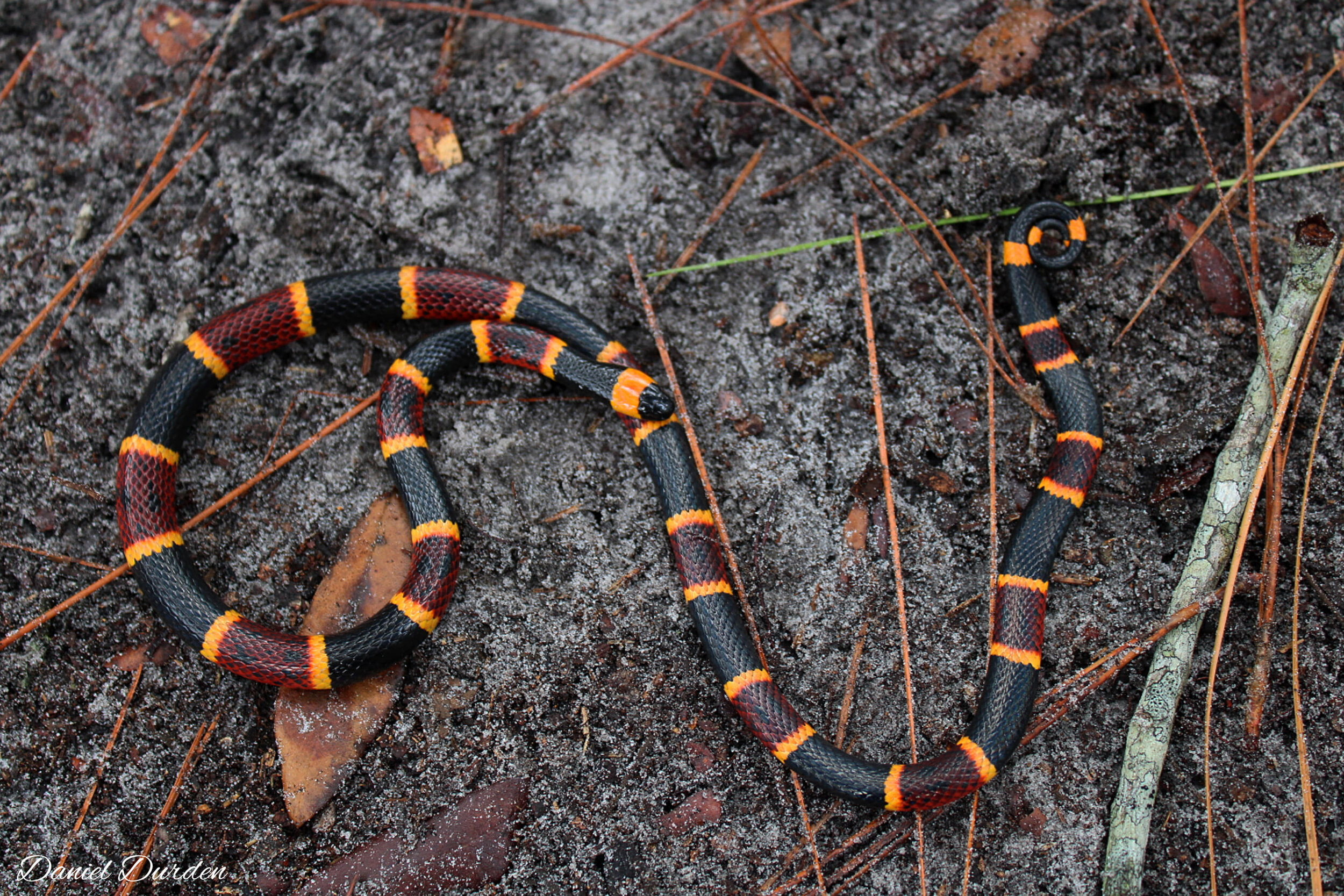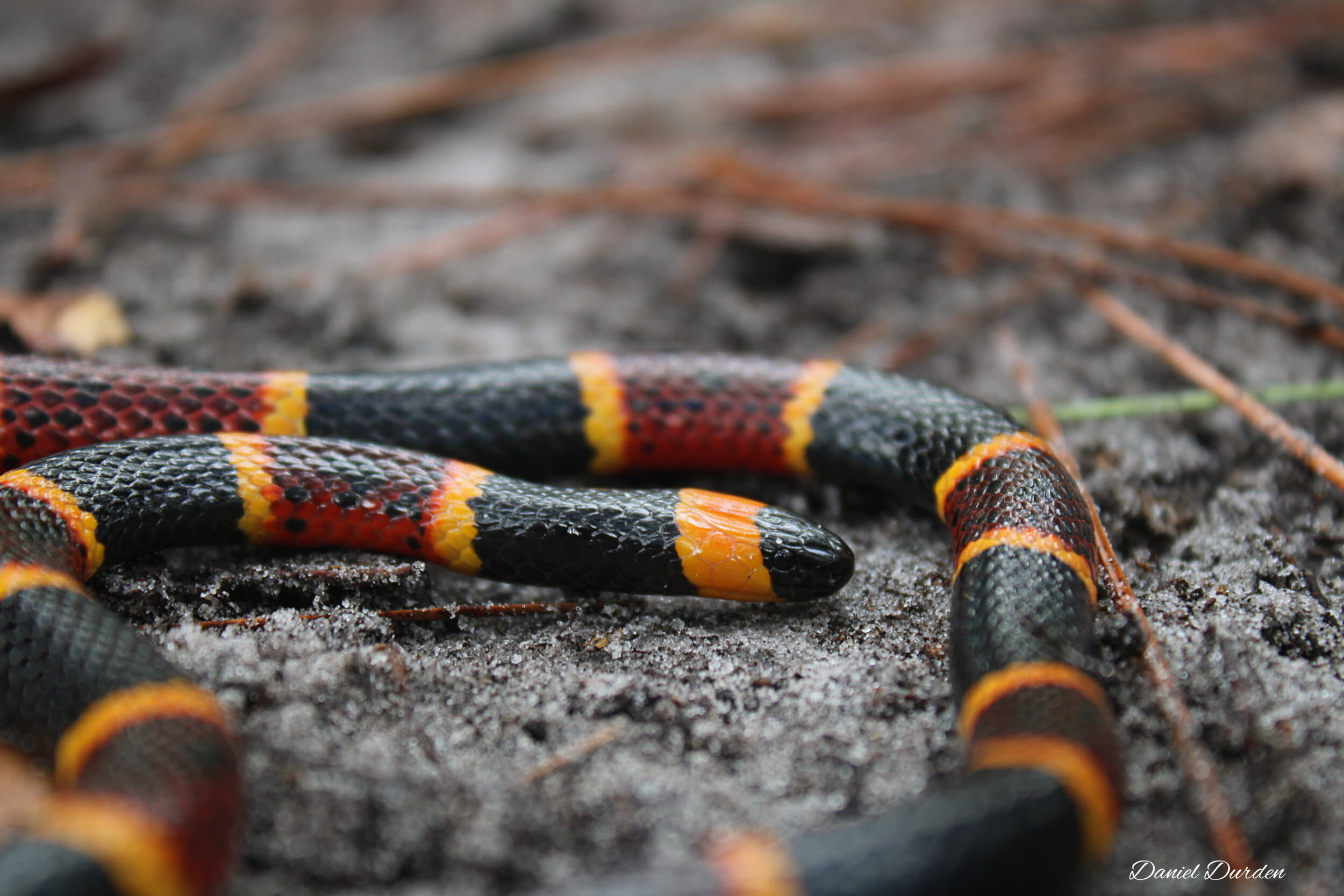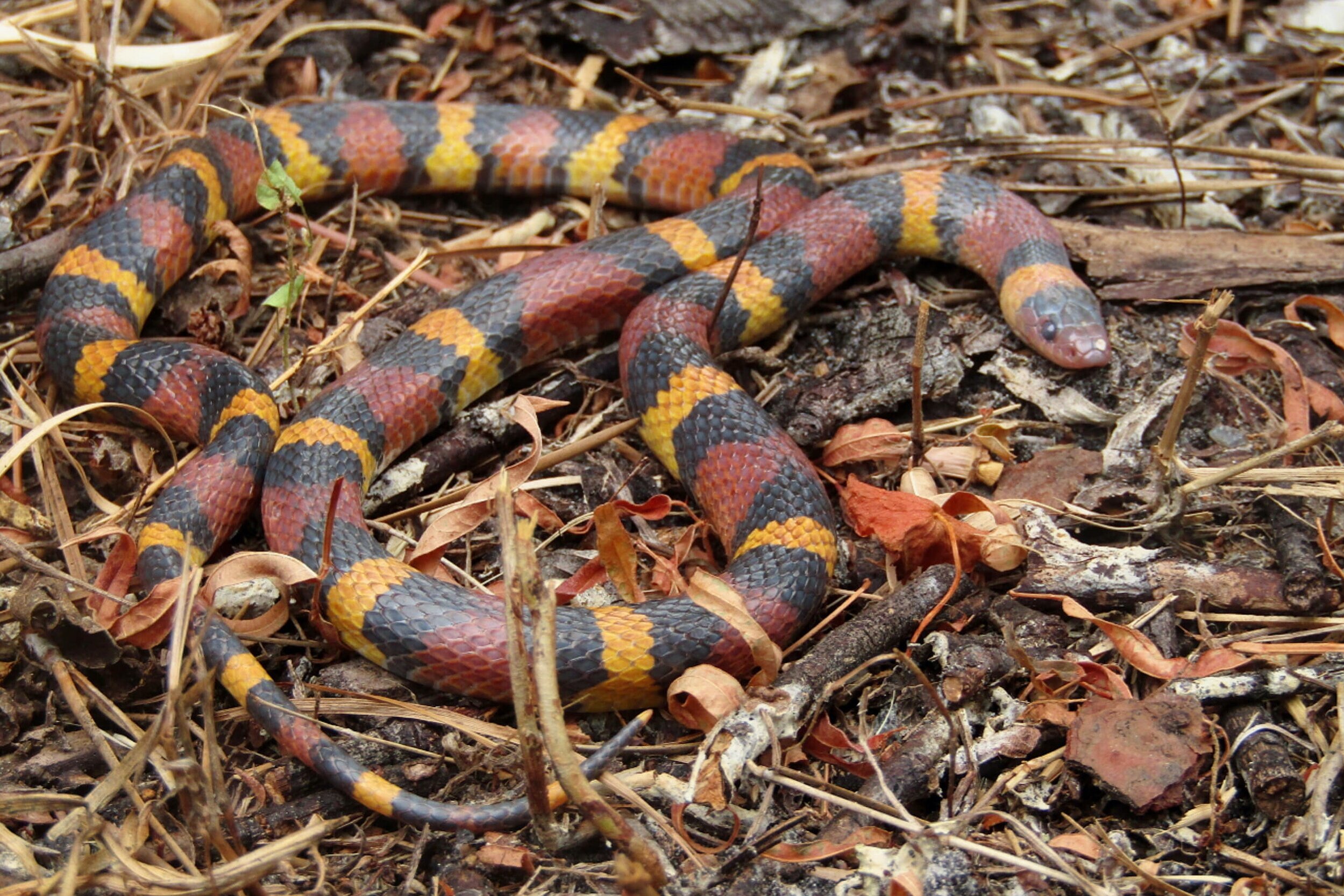Eastern Coral Snake
Micrurus fulvius
The Coral snake is one of our most unique and fascinating species of snake here in Florida. Bites are rare, and we do have other look-alike species that are often confused with Coral snakes. Let’s learn more about these brilliantly colored, shy animals!
Photo by Daniel Durden
Identification
The average size of the coral snake is 20 to 30 inches with a record of about 47 inches. They are a thin-bodied snake with smooth scales with brightly colored bands that go all the way around the body of red, black, and yellow. See the comparison section for more details on color patterns. Babies look like small versions of adults.
Photo by Daniel Durden
The Eyes!
So many people rely on the eye shape to determine if a snake is venomous, but there are exceptions to this rule! In Florida, we have six venomous snake species, and all but 1 are vipers. Vipers have elliptical-shaped pupils, broad-heads, and heat-sensing pits, BUT the coral snake is an elapid, and they are related to cobras. Elapids have round pupils, and this is why the coral is so unique! Also, note the eyes are camouflaged well, and looking closely at the eyes of venomous snakes of any kind is not recommended.
Habitat and range
The Eastern Coral Snake occurs throughout Florida, including the upper Florida Keys. They prefer various habitats from dry, well-drained flatwoods scrub areas to low wet hammocks and borders of swamps. They are a secretive animal and can be found under debris and loose soil. Wood piles and rotting logs are a favorite.
The Coral snake has been found out in the open and on the move during heavy rains, breeding season, and seasonal changes.
What’s on the menu! Coral snakes feed on lizards, small skinks are a favorite, frogs, and even other snakes.
Breeding, mating is typically from late spring early summer but also may occur late summer to fall. Unlike our other venomous snake species in Florida that give live birth, know as ovioviperous , the coral snake lays eggs like other elapids. This makes the coral snake the only egg-laying venomous snake in Florida and in North Americaat that! Makes you rethink all those “rattlesnake egg” envelop jokes and pranks from the past!
Photo by Daniel Durden
Hatchlings are about 7 inches when they emerge from the egg. Not a lot is known about their life span, but it is said that they live about seven years in captivity.
Lets Compare
In Florida, we also have the non-venomous scarlet snake, and scarlet king snake that have the same colors and similar pattern as the coral snake, but the order of the colors and bands do differ!
Scarlet Snake
Scarlet King Snake
Coral Snake
There is a rhyme people often use to help remember the difference….
Red touches yellow kill a fellow, Red touches black a friend of Jack.
With about 85 species of coral snake in the world these color patterns only represent North America. Also you will have that occasional oddity as with any animals so please give snakes their space and show them respect.








